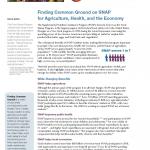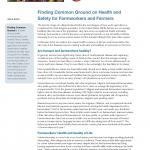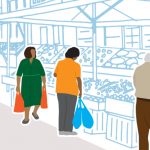Increasing Fruit & Vegetable Consumption
Finding common ground
Making it easier for consumers to access fruits and vegetables in their neighborhoods can improve residents’ health, especially in communities with limited options for buying fresh food.
It also builds economic opportunities for farmers and rural communities by providing new markets for crops. Efforts to aggregate fruits and vegetables from small-scale farms helps farmers find greater demand for their products with larger retailers – and it gives consumers access to the most flavorful fruits and vegetables at the peak of ripeness.
The fruit and vegetable industry (also known as the specialty crop industry) has worked with nutrition groups (including government health agencies, food access organizations, and the anti-hunger community) to promote its products for at least two decades. This type of collaboration has focused on educating the public about the health benefits of fruits and vegetables through programs like SNAP-Ed (Supplemental Nutrition Assistance Program Nutrition Education). But now, nutrition groups are leading efforts to help reverse obesity rates by bringing fruits and vegetables into local venues like schools, neighborhood stores, and restaurants. These initiatives are another opportunity for these two sectors to collaborate at the local and state levels.
Learn more about the challenges that farmers and the health community face in building supply and demand for fruits and vegetables. Understanding these challenges is the first step toward working together.
Finding Common Ground is a series of issue briefs commissioned by the Healthy Farms, Healthy People Coalition to bring agriculture and health stakeholders together, building a stronger base of support for a healthy, economically viable food and farming system in the United States. Each brief highlights a food and farming issue in which agriculture and health stakeholders have shared interest.




